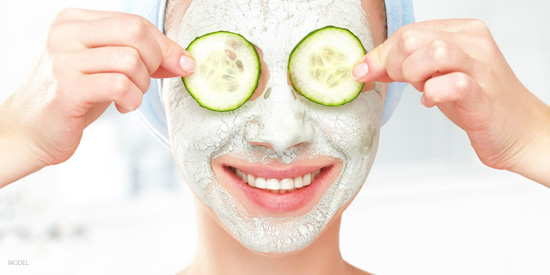The world of skin creams has come a long way since our mothers’ and grandmothers’ day. Back then, “moisturizers” were basically barrier creams that helped prevent water loss. Some contained oils to prevent drying, but while they kept skin hydrated, they also blocked pores. Cheap, over-the-counter skin products today are, unfortunately, often similar to these outdated creams.
There’s been a huge investment in scientific research to improve skin creams. While newer products won’t alter your appearance overnight, a well-chosen skin care regimen will definitely impact your complexion over time. My staff and I can tell at a glance who has been looking after their skin. Those who have faithfully used high quality, medical grade products always look younger, with smoother, even-toned skin, fewer fine lines and wrinkles and smaller looking pores even into their 50s, 60s, 70s and beyond.
So what should you look for in a good skin care regimen? We like to use the abbreviation GRASS, to summarize all the elements you should include to keep skin looking great.
Growth Factors:
Growth factors are molecules like proteins or hormones that play a role in stimulating cell growth, and therefore in collagen production and tissue healing. Examples of some common growth factors are Human Growth Factor, Fibroblast Growth Factor, and various chemicals known as Cytokines. Scholarly studies, such as one published in the Journal of Drugs and Dermatology, have used objective measures of roughness/smoothness of skin surface involving imaging with specialized optical devices, to show that treating the surface of the skin with these molecules results in improvement in skin texture over a couple of months.
Every skin care regimen should include growth factors.
Retinoids:
Retin A and Retinol are derivatives of vitamin A, and a great deal of study has been done to show that these compounds are very useful in reducing signs of skin aging. In fact, no other compound exhibits more convincing scientific proof of the reversal of signs of aging as the vitamin A analogs. Retinoids promote exfoliation and cell turnover and again stimulate the production of important building blocks of skin like collagen and elastin. Regular use reduces fine lines, reduces pigment, and is also beneficial in reducing break outs of acne.
Antioxidants:
While both growth factors and retinoids are “stimulants” for the skin, antioxidants are protection. There are many things that damage our skin and accelerate the aging process. Environmental pollutants, irritants, infectious agents, smoking, fluctuation in weight, and hormonal variations are just some of the factors that age skin. Antioxidants, vitamin C, and many other botanicals protect our skin by preventing oxidation, which is the final pathway to skin damage that is common to all these toxic exposures.
Sunscreen:
Of all the things that damage our skin, UV exposure is the most notorious. Sunscreen is perhaps the most important cream we can use to protect our skin.
Specialty Products:
A basic skin care regimen includes growth factors, retinoids, antioxidants, and sunscreen. Once you’ve chosen products that fulfill these requirements, you may wish to address some specific concerns particular to your skin. For example, if your skin is dry, you may want to add a moisturizer. If lines around your eyes are the main concern you might try an eye cream. If the pigment is a major concern, then a lightening/brightening cream, such as Obagi’s Clear, or SkinMedica’s Lytera may be the perfect addition to your skin care. If acne troubles you, then a benzoyl peroxide or antibiotic product may be appropriate.
Remember, your specialty concerns are only one small part of a good treatment plan- never forget the 4 GRASS basics. Helping you with your specific concerns while insuring you have all the elements of good anti-aging is where a specialist can help.


Leave a Reply